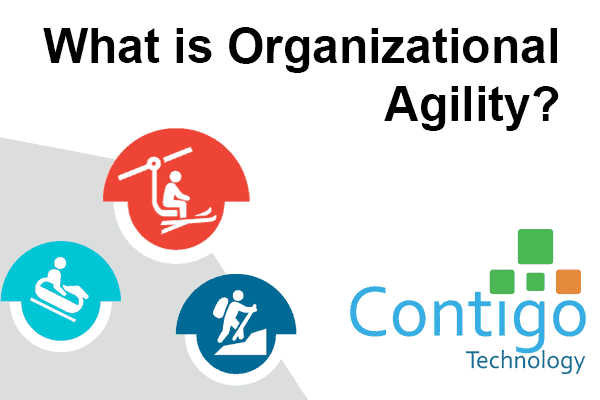
What is Organizational Agility?
It is sometimes difficult to tell what will happen in the future. Considering all that has happened so far in just the past two years – from an unexpected pandemic to supply chain problems to war, it would have been impossible for anyone to have predicted these occurrences enough to be sufficiently prepared.
These difficulties make it even harder for businesses to strive to succeed and achieve their long-term goals.
When your employee, customer, and market needs change abruptly, you have to be prepared to make an essential shift. SMBs, also named small and medium-sized businesses, can accomplish this with organizational agility or SMB Agility.
Organizational agility is a term used to describe the flexibility and coordinated effort to rapidly address changing market situations. This approach can empower your people, processes, and technologies to change direction when required, preventing extended downtime and all-important revenue loss.
Importance of organizational agility
Companies focused on agility can productively, independently, and flexibly manage their growth. This approach can enhance business efficiency and reduce high costs.
Businesses do not predetermine the journey forwards with this agile approach. Instead, iterative changes are made based on feedback constructed throughout the growth process. You can gain feedback from key stakeholders and your employees.
Once modifications have been made to accommodate all the feedback suggestions, your business can prepare to carry out additional changes based on future recommendations. Since your professional clients are also part of this procedure, it may be helpful to utilize their feedback to make some more changes and identify your top priorities.
What is the difference between agility and scalability?
Scalability involves the capability to increase or decrease business resources to meet essential needs. However, agility is the capability to react rapidly to a situation, keep moving forward, and adjust with minimal loss or downtime.
Simply, scalability concerns your capacity to scale up and down when responding to changing situations, whilst agility encompasses your power to shift left or right to avoid any stumbling blocks.
To ensure that your company’s growth journey is botch-free, you must take a scalable and agile approach. To achieve this, you are required to approach a few things*:
Define your specific target audience
Ensure that you consistently deliver value to your specific customers, establishing transparency and trust.
Possess an enhanced understanding of the aspects which influence the business value
Despite many businesses identifying their target customer base, they sometimes do not fully understand what actually motivates these customers to buy their products or services. Offer your customers samples or prototypes and observe what they do to gain a bigger and better picture. Ensure that you continuously monitor and record customer preferences.
Approach growth iteratively
Business is unpredictable, so it might be worth iteratively growing your business. This method will allow you to learn continuously, adapting your business as you go along.
Formulate integrated and self-managing teams
Develop small, self-managed, and efficient teams of employees with all the expertise that your company will require. You might want to cross-train your team members to adapt to the requirements of each iteration and discover the most effective ways to organize themselves.
Developt an atmosphere of constant improvement
Setbacks are frequent in business, so you need to be able to pick your business up after each challenge and attempt to improve without any hesitation.
Creating organizational agility could need more time and effort than what you have available. If this concerns you, avoid this problem and simplify your growth journey by teaming up with an experienced managed service provider like those in our team.
Feel free to get in touch with us today to schedule a no-obligation consultation!
To understand the discussed concepts more, click here to download our infographic, “Considerations for Achieving Organizational Agility.”